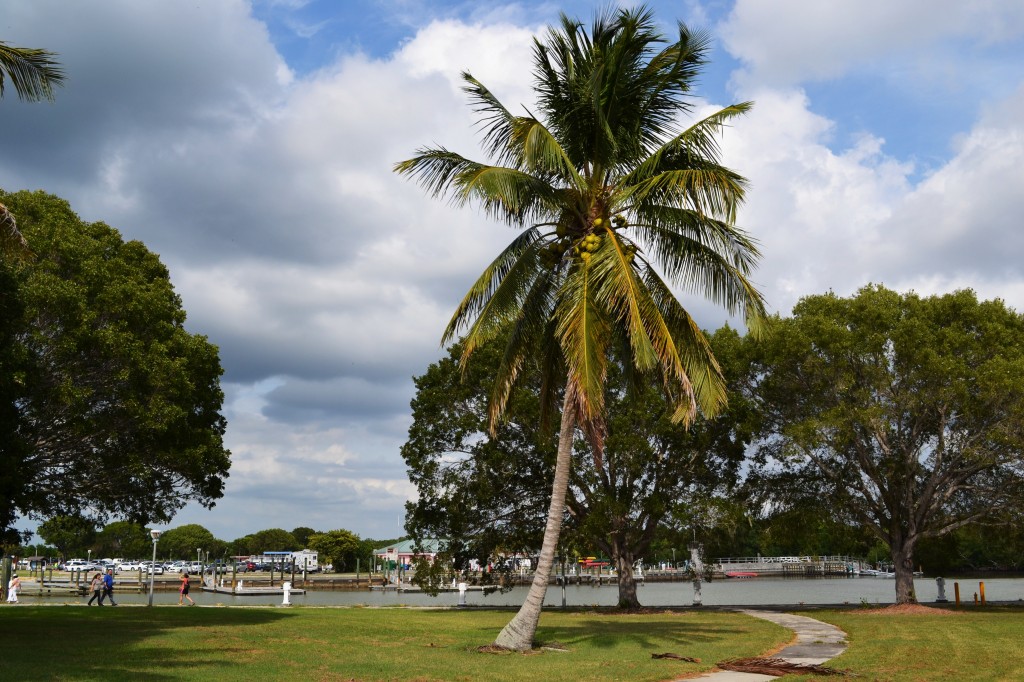Coconut Palm
Cocos nucifera
Plant Family: Palmae
Leaves: Pinnate, very long, to 6 m, the segments are held in two ranks off the rachis, in a single plane.
Bark: Gray, ringed; the trunk is often curved and it always lacks a crownshaft.
Flowers: Rounded, yellow, held in long clusters throughout the year.
Fruits: The familiar coconut, green, turning brown when ripe, a large three-sided husk that encloses the round seed or nut, one of the largest seeds produced in the Plant Kingdom.
Habitat: Beaches; widely planted; tolerant of a wide variety of soil types.
Growth Form: Medium-sized to potentially large tree.
Similar Species: Unlikely to be confused with any other palm tree.
Comments: The fruit floats and retains the ability to germinate even after many months in salt water, resulting in a worldwide distribution on tropical coasts. It has been called one of the most useful plants on earth – the fruits have many medicinal and culinary uses, the leaves are used as roofing for tropical dwellings, and the wood as building material and fuel in the tropics.

